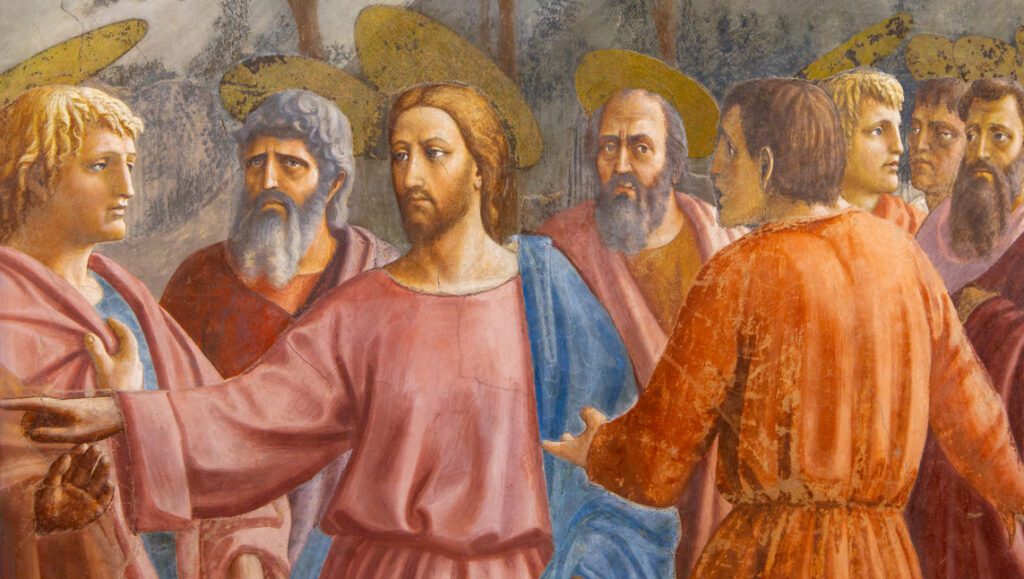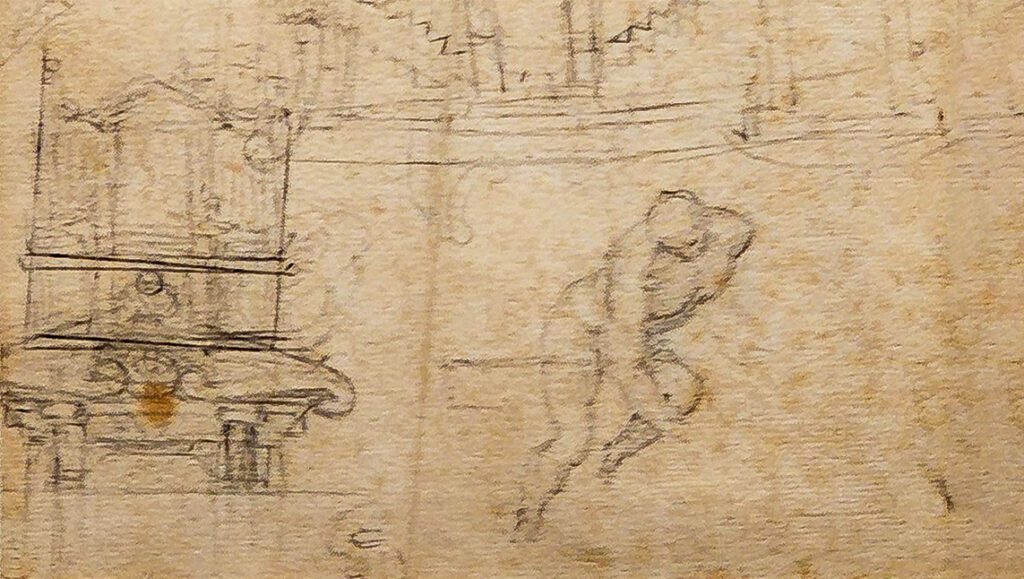
A banner as homage celebrating the 70th anniversary of the right to vote
The banner painted for the Palio dell’Assunta was dedicated to women, celebrating the 70th anniversary of the right to vote. It was in fact 1946 when women in Italy obtained the right to elect their own representatives, but also to be elected. The banner was created by the Belgian artist Jean-Claude Coenegracht.
Artist born in the Belgian city of Liège in 1948 – the city where he also completed his studies in drawing, engraving and painting at the Accadémie Royal de Beaux-Arts – Coenegracht creates with the drapery in Siena “an artistic research that materialises, as in the Flemish style, in an open space where a whole series of small references and narrative elements also find life»¹.
In a style that recalls Liberty, the artist has depicted, in the lower part of the drapery, five women of different ages, one of whom emphasises in her movements her gesture of having voted.
The image of this Palio as a tribute to women becomes a lyrical tribute, recalling this important conquest obtained 70 years ago, but it is a tribute that frees itself from any rhetoric. There can’t be a more topical issue than respect for women’s rights, especially if you read the local news: the sad news of the rape of an American girl near Porta Pispini was just a few days ago.
But far be it from me to exploit such a fact, so rare in Siena but no less serious for this, dramas like these should push public opinion to draw greater attention to respect for women in their physical dignity and moral integrity in the society.
The banner showcased in the Palazzo Pubblico
I simply wanted to take the opportunity of this theme of homage to women also to applaud the Belgian artist, who with his art paid homage to Siena, a city that he seems to consider a second home. A Palio as a tribute to women with a “sweet” expression, according to a definition made by the artist himself²; a work that is by no means trivial and far from “deprived of the essence of the Palio”, according to the traditional detractors who, as great inexperienced people, always shoot it big every year, launching sterile criticisms on the way the banners are painted “foreigners”. The Coenegracht Palio is instead a work full of stylistic references to different artistic seasons, as the art historian of the University of Siena, Prof. Elisabetta Cioni illustrated in detail on the occasion of the presentation of the drapery held on August 10 in the Palazzo Pubblico. It is hoped that the beautiful roses painted by Coenegracht in the work, now exhibited in the Cathedral of Siena, are an omen for an active and farsighted attention towards the other half of the sky ⟢
Webliography
- OkSiena, consulted on 08/15/2016
- Antenna Radioesse, consulted on 08/15/2016



